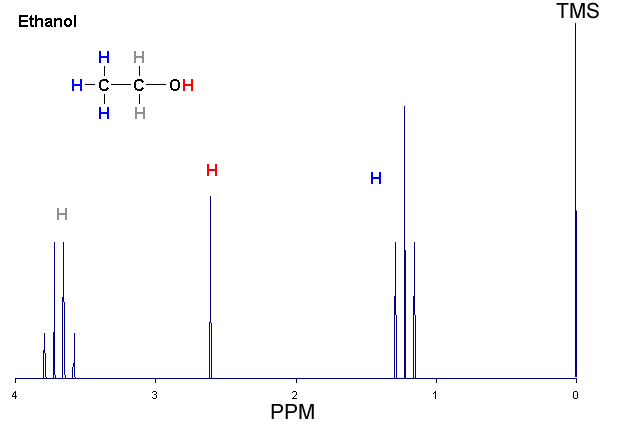1) The number of peaks indicates the number of chemically different hydrogens.
2) The area under each peak indicates the relative number of chemically similar hydrogens present. It is not the height of the peak but the area under the peak that indicates number of hydrogens.
3) The TMS (tetramethylsilane) is used as a reference point and all other peaks are graphed downfield of the TMS signal. TMS has 12 chemically similar hydrogens so it gives a very strong signal.
4) The horizontal scale is shown as ppm and is called the chemical shift. It is measured in parts per million - ppm.
For example the peak at a chemical shift of 2.6 ppm representing the (OH) proton, means that the hydrogen atom needs a magnetic field 2.6 millionths less than the field needed by TMS to produce excitation of the proton.
Any peak to the left of the TMS is said to be downfield of TMS, the further to the left the more downfield it is.
5) The splitting pattern indicates the neighbouring hydrogen atoms according to the simplified n+1 rule.
For example take the triplet at 1.2 ppm. It is split into three signals indicating that there are two neighbouring hydrogens hence three signals according to the n+1 rule.
The quartet at 3.8 ppm is produced due to the splitting caused by three neighbouring protons, once again four signals due to the n+1 rule.
